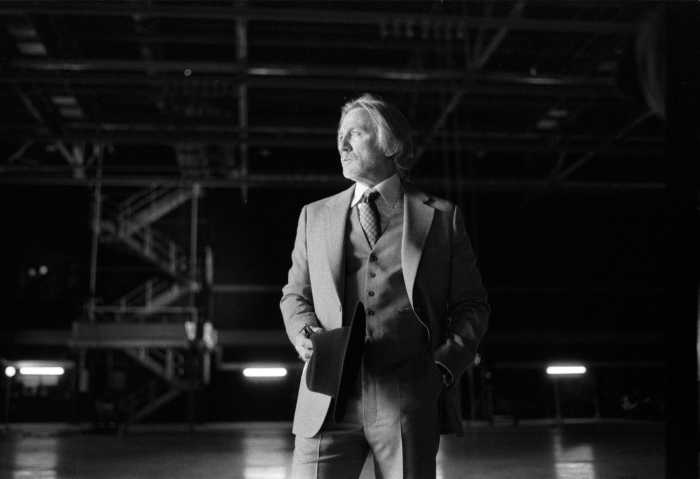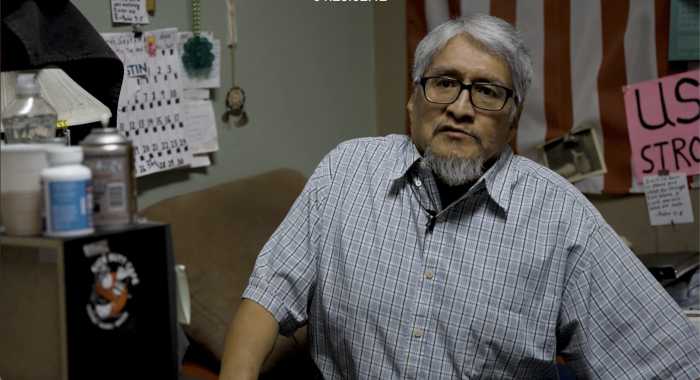To immerse yourself in the dazzling, mind-boggling photographic oeuvre of James Bidgood is to be a space and time traveler, experiencing a myriad of worlds, peopled by the most succulently beautiful of youths — with matadors in Spain, sexy Frenchman in Paris, Midwestern farm boys in overalls barely held up by one precarious suspender, or, even underwater, with glistening male sea nymphs bearing bejeweled sunken treasure. The artist, himself, never actually went to any of these places. But he did create them all, from the ground up, in his tiny Hell’s Kitchen apartment in the 1960s, ingeniously using skills honed at Parsons School of Design.
Born in Madison, Wisconsin, in 1933, he arrived in New York at age 18 and was immediately swept into a pre-”Pose” universe of underground drag bars and balls, pornography, and avid hustlers. He found a home at the legendary drag bar Club 82 as resident set and lighting designer. Flouting the era’s repressive, even criminal policy toward public homosexuality, Bidgood erotically celebrated the male form and bulging genitalia in his own near-psychedelically charged, highly stylized manner. His work appeared in publications like Muscleboy and The Young Physique, which sneakily purported to be only about health and fitness, hence all of that exposed beefcake. He boldly did all of this in a time when laws were only just beginning to be relaxed about male frontal nudity and sending pornographic material through the mail.

The Museum of Sex celebrates him, with the breathtaking exhibit “James Bidgood’s Reveries,” rife with pristine prints that make the walls throb with their vibrant color and content, as well as intriguing memorabilia of the various clubs and transgender personalities he once knew.
Lissa Rivera, the show’s curator, said, ““Bidgood’s photos were first published as gay erotica under his pseudonym Les Follies des Hommes. Originally, his photographs and color slides were distributed by mail order from back page ads in physique magazines. Willing clients would send in a fee and, in turn, would receive a photo set of prints made by Bidgood at a local drugstore lab.”

His florid work, heavily influenced by Hollywood, with its Technicolor extravaganzas, culminated in his own movie, the legendary “Pink Narcissus” shot over a period of years and released in 1971. It was a visually diaphanous essay of the wild fantasy life of a gay prostitute (played by Bidgood’s favorite muse, the luscious Bobby Kendall), which was an instant underground hit, although Bidgood took his name off the credits after creative differences with his producer.
His images, which were the true precursor of successful contemporary photographers like David LaChapelle, Pierre et Gilles, and Steven Arnold, rather languished until his real rediscovery in the 1990s with a glossy coffee table book, followed by exhibits at the National Portrait Gallery, the Brooklyn Museum, and the Musée d’Orsay. His once highly outlawed output is now ensconced in the permanent collections of the Tate Modern in London and the Museum of Fine Arts in Houston.

“Bidgood’s photos are unapologetic records of pure visual pleasure,” Rivera observed. “The colors, the lighting, attention to detail, and reference to tropes of glamour are celebratory. Bidgood’s images originally fell outside of art history proper. Underground queer filmmakers working congruently, like Jack Smith, Kenneth Anger, and Andy Warhol [once mistakenly credited as the director of ‘Pink Narcissus’] were more connected to avant-garde communities. Bidgood was in a parallel, yet more isolated universe, using similar tropes of early Hollywood and unabashed sexuality, though in a more insular way.”
Rivera is correct about Bidgood always going his own way. I met him in the 1990s and he remained as feistily independent as he ever was, not at all one to play the self-marketing game essential to commercial artistic success. Far more than any contemporary artist or gallery, one of his main enthusiasms remained, as it was his whole life, the MGM musical spectacular “Ziegfeld Girl” (1941), and recalled his cherished paper dolls of that film’s stars, Hedy Lamarr, Lana Turner, and Judy Garland. (We bonded over that, because I firmly believe that my childhood TV sighting of Lamarr, in the “You Stepped Out a Dream” number, draped in Adrian spangled white tulle with a headdress of quivering stars, turned me gay, instantly.) He was also working on an epic feature, which, startlingly, would have nothing visual about it, being more of an aural drama, using several different actors’ voices as if they were the expressive, varying colors of a palette.’

JAMES BIDGOOD: REVERIES | Museum of Sex | 233 Fifth Ave. at 27th St. | Through Sep. 8: Sun.-Thu., 10:30 a.m.-11 p.m.; Fri.-Sat., 10:30 a.m.-midnight | $20.50; $17.50 for students | museumofsex.com




































